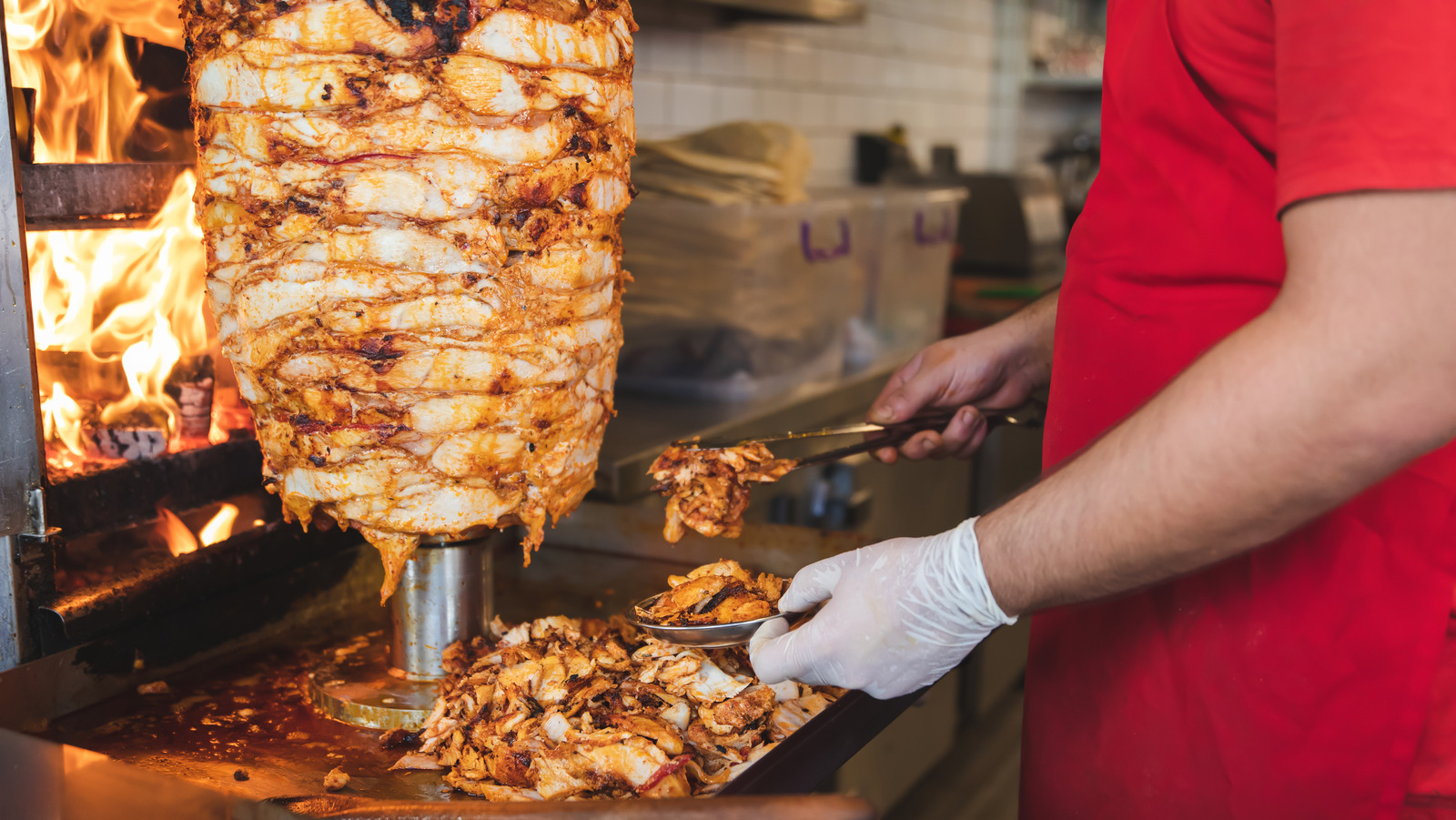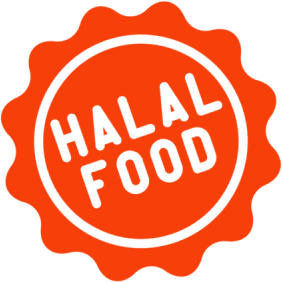Shawarma is an Arabic word that means “turning,” and its history can be trace all the way back to the Ottoman Empire in the 18th century. It has strong ties to contemporary Turkey, and the meat was historically marinate in sauces made of yoghurt, vinegar, and a variety of savory spices. Traditionally, the meat for shawarma was prepare on an open flame; however, in modern times, the meat is properly prepare using gas or electricity.
The Origin of the Word Shawarma
Another method of cooking that was use to emphasize the flavor, as well as tenderness of the meat, was the vertical rotisserie, which is thought to have been develop either in the 18th or 19th century. The very first wrap shawarma, which is significantly similar to what we see now, was create in Turkey during the 1800s by a guy by the name of Iskandar Efendi. According to Egyptian shepherds’ cooking methods, which involve hanging lamb on an open fire, the word “shawarma” may have come into being. In order to ensure that the heat was distribute evenly, the lamb use to be slowly turn.
What Methods Were Use to Spread Shawarma Around the World?
The shawarma meal was able to expand throughout the Mediterranean and Europe when many Middle Eastern immigrants (particularly those from Iraqi, Lebanese, Armenian, and Turkish communities) move to these areas at the beginning of the century and brought their native cuisines with them. Due to this, the meal has evolve to suit the culinary preferences of each nation it has travel to, giving rise to a number of delectable recipes that are quite similar to it. As a result, it is estimate that the current market value of the European kebab sector is somewhere in the range of 3.5 billion euros.
Key to the Flavor and Texture of Shawarma is the Rotating Rotisserie Machine
The rotisserie machine, which is necessary for the production of shawarma, yields a juicy, tender cut of meat that goes nicely with the additions that are frequently serve within the bread. After it has finish cooking, the meat from the vertically upright rotisserie is shave down vertically to produce the meat that is recognize for being extremely lean. With frequent basting, this rotating, vertical cooking method can be use for a long period of time to produce the distinctive texture of shawarma meat. Additionally, to keep the shawarma rotisserie in place, onions or tomatoes are frequently position at the top of the skewers.
Aromatic Spices Are What Made Shawarma What it Has Become Today
Coriander, allspice, turmeric, cinnamon, cumin, ginger, and black pepper are among the ingredients in shawarma. They make for a savory, delectable dish that tastes as though you are taking a mouthful directly from the Middle East and are wonderfully comforting. The foundation of the cuisine is the distinctive shawarma spice blend, which gives it the well-known and identifiable burst of flavor that sets shawarma apart from other traditional Middle Eastern dishes. Despite the fact that the spice mixtures give the shawarma a tone of flavor, they are also crucial for the meat’s exterior’s rich, dark color.
A Beautiful Blend of Indian and Southeast Asian Spices
Shawarma is a dish that is prepare in a variety of ways around the Mediterranean and the world, but its basic spices never change. Some of these ingredients can be found in Indian and Southeast Asian cuisines, two regional cuisines that are close to the Middle East. Spices such as cinnamon and allspice may seem like an unusual addition to savory dishes when use alone, but when combine with their complementary ingredients, the flavors come together harmoniously.
Many Different Types of Meat Can be Found in Shawarma
The supple, juicy quality that makes shawarma so wonderful is provide by the fat that is sandwich between each layer of meat in shawarma, which is generally produce from lamb, goat, turkey, beef, or chicken. Attempt to utilize chicken thighs instead of using chicken breasts when making chicken shawarma by yourself for a portion of chicken with a little more natural fat. Even more unusual meats, such as veal, are use in certain contemporary shawarma recipes. When serving shawarma, a variety of meats may even be blende; when this occurs, chicken and lamb are a common pairing.
Specifications Regarding the Meat
Due to the significant Jewish and Muslim communities in the nations where shawarma is mostly produce, the meat employ for making shawarma must be slaughter in a manner that is either kosher or halal, depending on who will be eating it. It’s crucial to confirm how the animal was grown, who is slaughtering the animal, and that the process is carried out exactly as prescribe in order for these kosher and halal rules to be respect. The people adhering to these regulations would not be capable of eating the shawarma if these procedures were not carried out correctly.
The Cultural Relevance of Shawarma
Many Middle Eastern cultures have share a common culinary tradition known as shawarma for a very long time. As a result of the memories associate with the flavors, shawarma serves as a unifying force among people. With a lot of protein, carbs, good fats, and calcium, traditional shawarma wraps are a nutrient-dense meal that also contains many other beneficial food groups. The significance of it rests in the flavors, which are a representation of the elegance and antiquity of the Mediterranean region, yet it is generally consume in modern cities in a casual manner.
Different Variants
The majority of shawarma recipes don’t contain pork because it is a dish that is consume by both Muslim and Jewish communities. There are significant cultural variations in the specific style of shawarma, as well as some minor variations. In contrast to Lebanon and Jordanian variants, which emphasize stronger cumin and sumac flavors, the shawarma serve in Istanbul includes grill tomatoes and pieces of mutton. Last but not least, the Amman form of shawarma roasts the meat horizontally after the rotisserie to produce a crispy skin. In comparison to other renown Middle Eastern delicacies such as chicken schnitzel or perhaps even lightly fried falafel, shawarma serves as a leaner and carb-savvy option. This is true among all of these diverse sorts with small variations from the original.
The Popularity of Shawarma in Canada
According to CBC News, shawarma has recently grown in popularity in the United States and Canada, particularly in Calgary. Shawarma is a dish that is popular in Palestine, Egypt, Turkey, and Lebanon where it is eaten frequently. In accordance with Ontario Culinary, Lebanese immigrants arrive in Canada between the 1970s and the 1990s, and many of them settled in various regions of the country, bringing their traditional cuisines and themselves with them. Shawarma businesses have experience growth in the past 10 to 15 years because opening a shop is generally not difficult.
Due to this expansion, Calgary has seen a significant increase in the number of shawarma restaurants in the city as well as a large influx of enthusiastic Canadians from other Canadian cities. Along with Calgary, Montreal boasts a sizable number of shawarma eateries, and that number is only growing.
Shawarma in its Various Forms: The Transition to a Plant-Base Diet
The food business is dominate by vegan shawarma, which is sold in restaurants and as pre-package meals in various shops. Some vegan variants of this Middle Eastern cuisine are construct of faux meat, like seitan, and some are made entirely of vegetables, showcasing mushrooms, eggplant, and even cauliflower. Shawarma can be more easily consume by persons who follow a stricter diet or, more generally, by any individual who wants to leave a smaller carbon imprint.
Conclusion
Definitely try to go enjoy some shawarma now that you have gain an understanding of how it has evolve across the world over the previous century.


